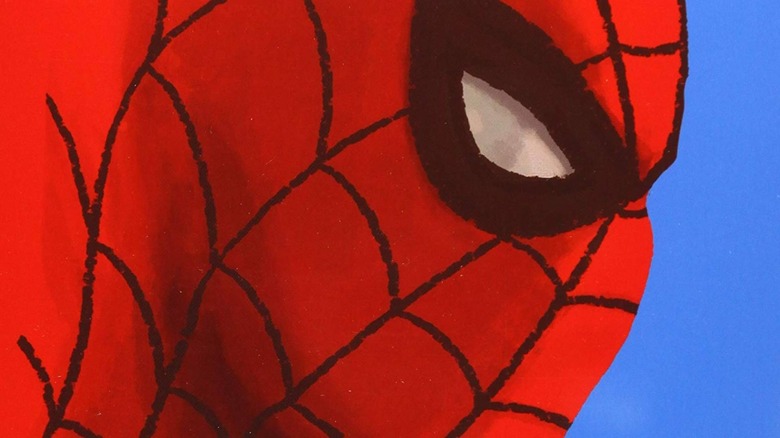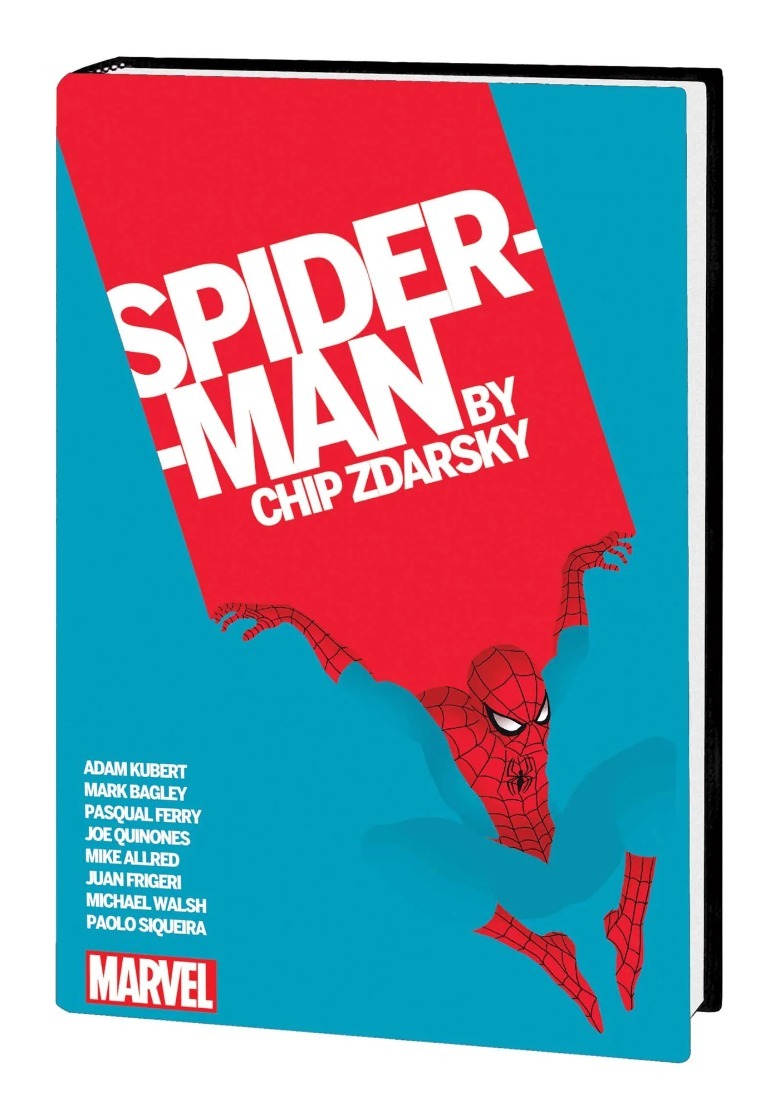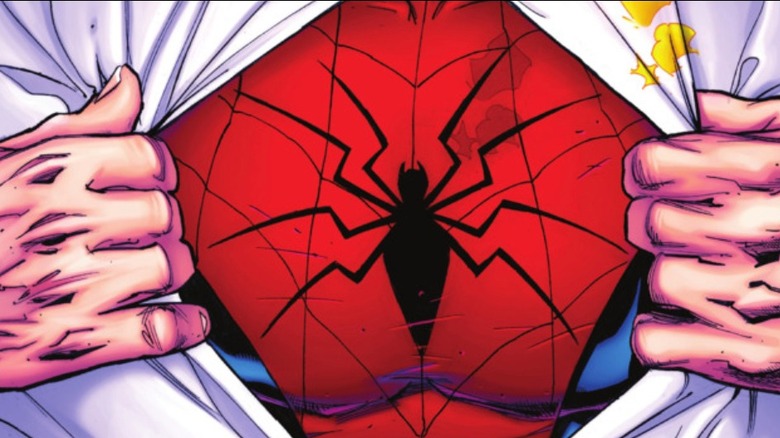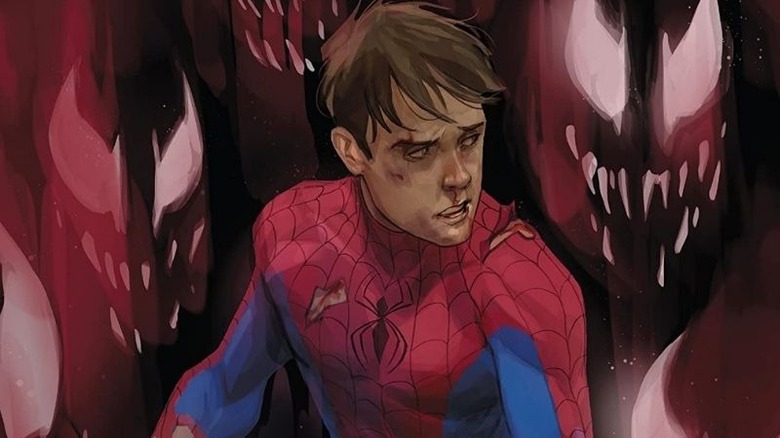Cool Stuff: Spider-Man Movie Fans Should Seek Out Chip Zdarsky's New Comic Book Omnibus
It's not certain when there'll next be a new Spider-Man movie in theaters. 2023 gave us one of the best ones yet with "Spider-Man: Across The Spider-Verse," but the sequel "Beyond The Spider-Verse" doesn't have a concrete release date. Tom Holland's live-action web-slinger is probably returning, but his fourth outing is currently in pre-production.
Fortunately, there are decades of great comics if you need your Spider-Man fix. Some of the best of this past decade, all written by Chip Zdarsky (a pen name for Steve Murray), are now collected all in a single omnibus edition. If you're a Spider-Man movie fan, you'd be remiss not to swing over to a comic shop or bookstore and seek this out.
Zdarsky was once a journalist with a side hustle drawing indie comics, but in the 2010s, he grew into a blockbuster writer for the Big Two companies of superhero comics (he's currently writing "Batman" for DC). Along the way, he made himself into one of the defining Spider-Man writers of this century. Zdarsky writes Peter Parker as the conscience of the Marvel Universe (in his also excellent "Daredevil" run, Spidey tries to be the angel on the Devil's shoulder).
"Spider-Man By Chip Zdarsky Omnibus" is a hardcover and has been advertised with a few different illustrative covers, including a new minimalist one drawn by Zdarsky himself.
Inside this 936-page omnibus is:
-
Zdarsky's 2017-2019 run on "Peter Parker: The Spectacular Spider-Man" (material from Free Comic Book Day 2017 (Secret Empire), Issues #1-6, issues #297-310, and Annual 2018 #1).
-
2019 mini-series "Spider-Man: Life Story" (Issues #1-6, Annual #1).
-
2021 mini-series "Spider-Man: Spider's Shadow" (Issues #1-5).
These have previously been collected on their own, but this is the first time they're all in the same binding together.
Peter Parker: The Spectacular Spider-Man
As an ongoing title, "Peter Parker: The Spectacular Spider-Man" is the most continuity-laden of Zdarsky's Spider-Man stories, so it has the highest barrier of entry to a new reader. Case-in-point: the confusing numbering. The book starts to use its "legacy" numbering on its seventh issue, counting back all the way from "Spectacular Spider-Man" stories first published in the 1970s.
It's also drawn by a succession of different artists, which has its ups (you can experience different art styles in a single series) and downs (a lack of aesthetic consistency). However, that's not to say it's a bad comic book.
Highlights include issue #6 "My Dinner With Jonah" (drawn by Michael Walsh), where Spider-Man agrees to an interview with muckraker J. Jonah Jameson and the two men bare their souls. The final issue of the run, "Finale" (drawn by Zdarsky himself), is a film student interviewing New Yorkers about their thoughts on Spider-Man for a documentary. Zdarsky draws on his journalism background for the two most emotional chapters of his run.
For a more action-oriented story, issues #301-303 comprise "Amazing Fantasy" (titled after the comic Spider-Man debuted in). Peter travels back in time to his early days as Spider-Man — artist Joe Quinones opts for a simpler art style to reflect the bygone era of the story's setting.
Spider-Man: Life Story
The crown jewel of Zdarsky's omnibus is "Spider-Man: Life Story." For this one, he teamed up with artist Mark Bagley, who defined the webhead's look for a generation when he drew the first 100+ issues of "Ultimate Spider-Man."
"Life Story" has a simple conceit: what if Peter Parker got his powers in 1962 (the year "Amazing Fantasy" #15 was published) and then aged in real-time? It sometimes bites off more than six issues can chew, but in doing so, it rewrites the Spider-Man canon into a single, mythic tale and ultimately gives Peter the ending he deserves. As Alan Moore once wrote about "The Dark Knight Returns," a character must embrace the passing of time to become a legend.
Each issue corresponds to one decade; the events of each issue compile the most important Spider-Man stories of that decade. As follows:
-
Issue #1, the 1960s: Peter in college fighting the Green Goblin.
-
Issue #2, the 1970s: the death of Gwen Stacy, the original "Clone Saga," and Harry Osborn becoming the Goblin.
-
Issue #3, the 1980s: Venom and "Kraven's Last Hunt."
-
Issue #4, the 1990s: The second "Clone Saga".
-
Issue #5, the 2000s: "Civil War" and Morlun.
-
Issue #6, the 2010s: Miles Morales and "The Superior Spider-Man."
Then, the Annual is a side story about J. Jonah Jameson's life story, running parallel to the mini-series. If you walk away from "Life Story" wanting more of this Marvel Universe, the Annual is a nice treat.
Spider-Man: Spider's Shadow
Zdarsky's latest Spider-Man story, "Spider's Shadow," is also an alternate universe story. Rather than the wide scope of "Life Story," this one hones in on a single defining moment of Spider-Man.
You might be familiar with the Marvel animated series "What If," which like the comic series it's named for, presents alternate outcomes in the Marvel Universe after different circumstances or decisions. "Spider's Shadow" is essentially a mini-series-long "What If" story. The centerpiece of change? The Black Suit Saga.
If you've seen Sam Raimi's "Spider-Man 3," you know the basics of this story. Peter Parker meets an alien symbiote that forms itself into a new, black costume for him. After it proves to be a bad influence, he forcibly separates from it. The symbiote returns like a spurned lover with a new host and name: Venom. What "Spider's Shadow" presupposes is that Peter chooses to give into the symbiote — and the results aren't pretty.
Drawn by Pasqual Ferry with stylish covers by Phil Noto, "Spider's Shadow" is the rare Spider-Man comic with horror in its blood.
"Spider-Man By Chip Zdarsky Omnibus" is now available at bookstores and digital retailers.




